Successful mushroom growing starts with the substrate, the growing medium for the mushrooms. The substrate recipe provides the essential nutrients and creates the right environment for mushroom mycelium to grow and produce mushrooms. By mastering how to prepare the substrate, you can improve both the amount and quality of the mushrooms you grow at home.
These proven formulas combine exact measurements with materials that are widely available. There is no one best or worst substrate option. It all depends on what you’re growing and where you’re growing it. Some mushroom species, like oysters, can grow on a wide range of substrates. Other species, like lion’s mane, are a bit more particular.
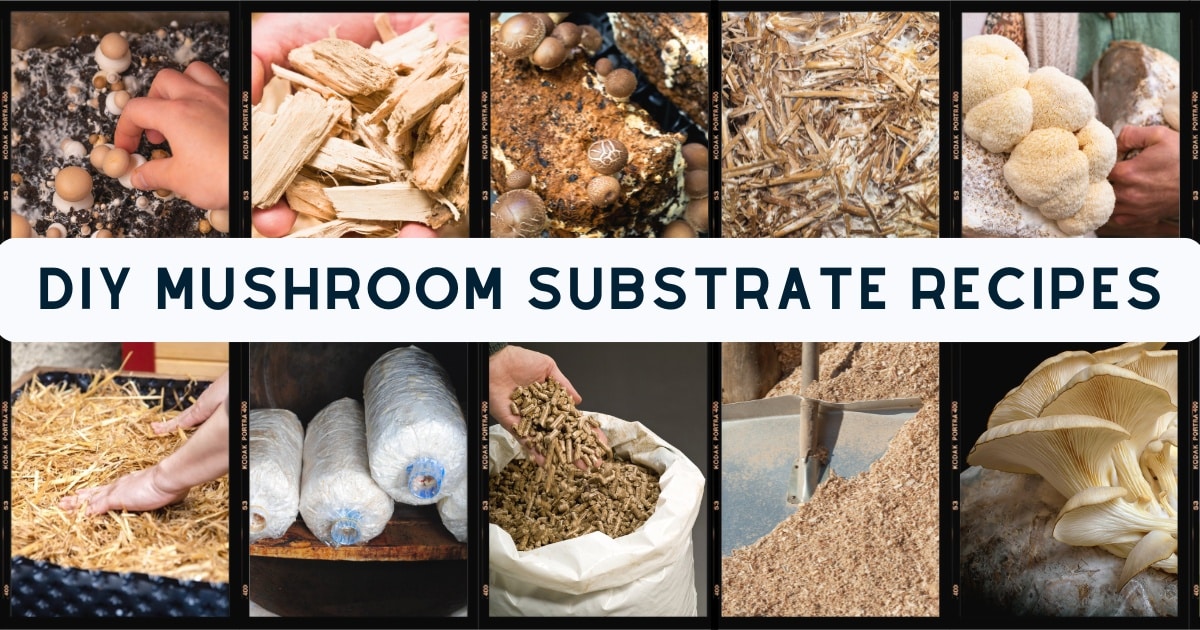
You’ll also find variances in how well a mushroom performs in a substrate based on the spores you’re using. For example, oyster mushroom strains vary widely by supplier – the spores and spawn are not all the same just because they’re the same mushroom.
Think of it like vegetable seeds. A squash is a squash, but there are literally hundreds of strains of squash a person can grow. And, while each one grows in dirt and needs water, the exact soil makeup needs will vary a bit between types. This is the same with mushrooms. The basic needs will be the same, but there is definitely room for experimenting and adjusting parts of the recipe to create the ultimate substrate mix.
Remember, no matter which substrate recipe you use, you’ll need to pasteurize or sterilize it before adding the mushroom spawn. Our guide How To Choose And Prepare Mushroom Substrate is a great place to start for learning about all the different substrates and how to pasteurize and sterilize them.
Table of Contents
Straw and Sawdust Substrate Recipe
– for oyster mushrooms
- 10 lb wheat straw
- 5 lb hardwood sawdust
- 1 cup gypsum
- Water, added slowly as needed
Cut or shred the straw into 2 to 4-inch pieces to increase its surface area for mycelium colonization. Soak the hardwood sawdust in water overnight to hydrate it, then drain any excess water. In a large container, mix the moistened sawdust, chopped straw, and gypsum until evenly distributed. Add water gradually to the mixture, stirring continuously until the substrate reaches a 60-70% moisture content. The substrate should be moist to the touch, with a few drops of water being squeezed out when tightly held in your hand.
Pasteurize the substrate by heating it to 160°F (71°C) for 1-2 hours. This can be done using a large drum or pot with steam or in an oven in heat-resistant bags. Allow the mushroom substrate to cool to room temperature before inoculating with mushroom spawn.

Master’s Mix Substrate Recipe
– for oyster, chestnut mushrooms, and lion’s mane
- 1 lb sawdust
- 1 lb soybean hulls
- 1.5 quarts water
OR
- 2.5 cups hardwood fuel pellets
- 2.5 cups pelletized soy hulls
- 1.5 quarts of water
Soak the soybean hulls and hardwood pellets overnight in the water. Soy hulls take a bit to break down. Mix all the elements together well, breaking up any larger pieces as you go. Do not leave any large chunks of hull or pellets, as that will interfere with the mushroom’s growth. The mushroom substrate should be moist to the touch, with a few drops of water being squeezed out when tightly held in your hand.

Compost and Manure Substrate Recipe
– for button mushrooms and other dung growing species
- 10 lb compost (well-rotted)
- 5 lbs aged and sterilized manure
- 2 lb vermiculite or coco coir
- Water, added slowly as needed
The compost and manure should be well-rotted and aged. This helps reduce harmful pathogens. Mix them thoroughly in a large container. Add vermiculite or coco coir and gypsum to the mixture.
Slowly add water while stirring until the mixture is 60-70% moist. It should feel damp but not soggy, and you should only be able to squeeze out a few drops of water. Sterilize the mushroom substrate. After sterilization, let it cool to room temperature before inoculation.
Hardwood Sawdust and Coffee Grounds Substrate Recipe
– for oyster mushrooms
- 5 lbs coffee grounds
- 5 lbs hardwood sawdust
- 1 lb bran
- 1 cup gypsum
- Water as needed, added slowly
Make sure the coffee grounds are slightly dry to prevent mold before use. If you’re using sawdust pellets, soak them in water until they expand and break apart. Drain any extra water.
In a large container, mix the coffee grounds, expanded sawdust, bran, and gypsum well so everything is evenly spread. Slowly add water to reach a moisture level of 60-70%. The mixture should feel moist but not soggy, and you should be able to squeeze out a few drops of water.
Pasteurize the mixture at 160°F (71°C) for 1-2 hours. Let the mushroom substrate cool down to room temperature before you inoculate it.

Hardwood Pellets Substrate Recipe
– for oysters, lion’s mane, chestnut mushrooms, pioppino mushrooms, shiitake, reishi, enoki
- 5 cups hardwood pellets
- 1 1/4 cup bran
- 3 pints water
Place your hardwood sawdust pellets in a large container for mixing. Add water and stir until the pellets turn into loose sawdust. Using warm water speeds up the process, but cold water works fine, too. It might take some time to mix all the pellets thoroughly to ensure they break down completely. This is important because the mushrooms will struggle to grow if the pellets remain hard.
Add the bran once the sawdust is well mixed and the pellets are broken down. You can add more bran for extra nutrition, but be cautious as it can increase the risk of contamination and reach a point of diminishing returns. Ensure the bran is mixed evenly throughout the sawdust. The mixture needs sterilization in a pressure cooker.

Straw and Coffee Grounds Substrate Recipe
– for oyster mushrooms
- 60% hydrated wheat straw
- 30% coffee grounds
- Water
Cut the straw into pieces that are about 2 to 4 inches long. This helps the mycelium grow better. Make sure the used coffee grounds are somewhat dry. This helps prevent mold and makes them easier to mix.
In a large container, mix the chopped straw, dried coffee grounds, and gypsum until everything is evenly combined. Slowly add water to the mix until it has 60-70% moisture content. The mixture should feel moist but not dripping. You should be able to squeeze out a few drops of water by hand. Pasteurize the substrate.
Let the mushroom substrate cool down to room temperature before you add the mycelium. This prevents damage to the mycelium.
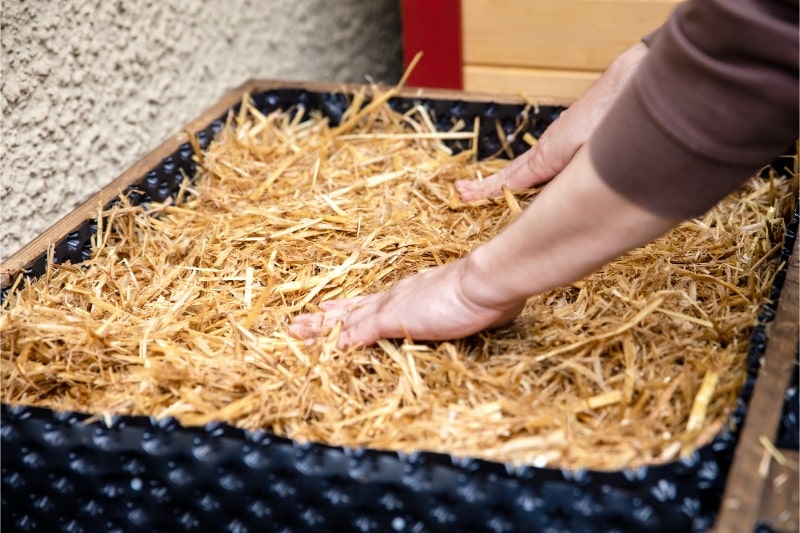
Coco Coir and Vermiculite Substrate Recipe (CVG)
– for oysters, lion’s mane, shiitake
- 50% coco coir
- 50% vermiculite
- gypsum (around 5%)
- Water
A general-purpose substrate using coco coir and vermiculite in a 1:1 ratio by volume works well. This adaptable recipe gives consistent results with mushrooms of all types in home-growing setups. It is very popular among mushroom growers for its versatility, ease of preparation, and growth results.
Soak the coco coir in hot water for 24 hours to rehydrate it. Mix the coco coir, vermiculite, and gypsum together until thoroughly combined. Add water if needed until it has 60-70% moisture content. The mixture should feel moist but not dripping. You should be able to squeeze out a few drops of water by hand. You do not need to pasteurize this substrate recipe. Let cool before use.
The video below explains just how easy it is to make this substrate recipe!
Premade Mushroom Substrates
If you don’t mind spending a little bit more to skip the step of making substrate recipes, you can buy premade/premixed substrates. Most companies that sell grow kits, mushroom spawn, and/or spores also sell their own substrate mixes. Of course, it costs more to have the work done for you, but it also takes a lot of guess work out of making your own.
The premade substrate recipes are put together by professionals of the craft and are usually quite effective. There are premade substrate mixes for all types of mushrooms, too.
The biggest upside, though, is that these save a lot of time and space. Ordering and storing the materials for DIY substrate can be time consuming and make your house or garage look like a storage unit. Then, you have to combine the ingredients into your desired recipe and pasteurize or sterilize it. None of this is difficult or complicated to do, but it does take significantly more time than having the premade substrate show up at your door ready to use!

Common Questions About Mushroom Substrate Recipes
What are the main ingredients in a basic mushroom substrate?
A basic mushroom substrate recipe typically consists of hardwood sawdust, straw, or wood chips, supplemental nutrients (such as wheat bran or rice bran), and water.
What is the cheapest way to make mushroom substrate?
The cheapest way to make mushroom substrate is by using common agricultural waste. A good and affordable choice is to mix straw (like wheat or rice) with used coffee grounds. The straw adds structure and nutrients, while the coffee grounds provide nitrogen and moisture.

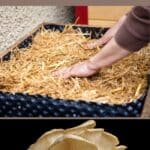
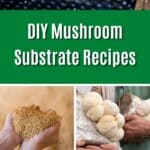
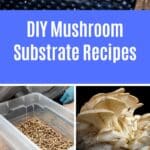
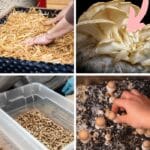

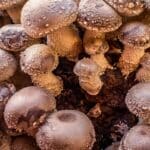
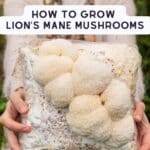
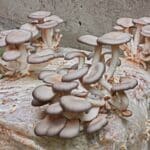
Leave a Reply